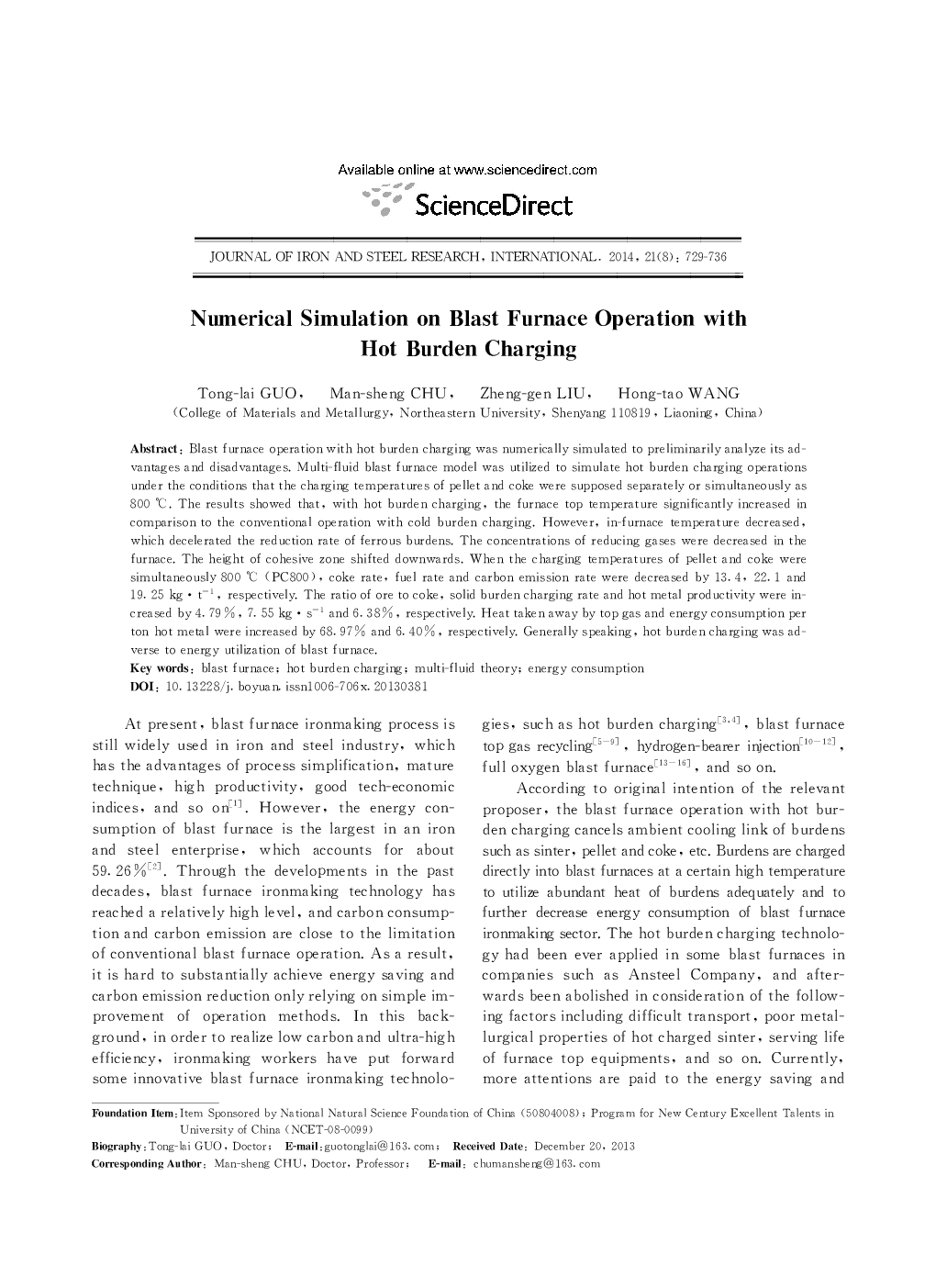| کد مقاله | کد نشریه | سال انتشار | مقاله انگلیسی | نسخه تمام متن |
|---|---|---|---|---|
| 1628592 | 1006095 | 2014 | 8 صفحه PDF | دانلود رایگان |
Blast furnace operation with hot burden charging was numerically simulated to preliminarily analyze its advantages and disadvantages. Multi-fluid blast furnace model was utilized to simulate hot burden charging operations under the conditions that the charging temperatures of pellet and coke were supposed separately or simultaneously as 800 °C. The results showed that, with hot burden charging, the furnace top temperature significantly increased in comparison to the conventional operation with cold burden charging. However, in-furnace temperature decreased, which decelerated the reduction rate of ferrous burdens. The concentrations of reducing gases were decreased in the furnace. The height of cohesive zone shifted downwards. When the charging temperatures of pellet and coke were simultaneously 800 °C (PC800), coke rate, fuel rate and carbon emission rate were decreased by 13.4, 22.1 and 19.25 kg · t−1, respectively. The ratio of ore to coke, solid burden charging rate and hot metal productivity were increased by 4.79%, 7.55 kg · s−1 and 6.38%, respectively. Heat taken away by top gas and energy consumption per ton hot metal were increased by 68.97% and 6.40%, respectively. Generally speaking, hot burden charging was adverse to energy utilization of blast furnace.
Journal: Journal of Iron and Steel Research, International - Volume 21, Issue 8, August 2014, Pages 729-736
